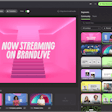
What a long, strange year it's been. By March 2020, events and meetings of all types were making the difficult decision whether to cancel or shift to virtual, with planners and producers scrambling to learn new skills and best practices for this brave new digital world. So, what have we all learned? Here, 22 North America-based event producers of all types reflect on the last 12 months, and share their biggest tips and takeaways for planning effective virtual gatherings.
1. Don’t try to replicate your in-person event—but also, think beyond the webinar.
Channing Muller, principal of DCM Communications, a Chattanooga, Tenn.-based event consulting firm: “A virtual event should be different from a webinar or regular Zoom meeting in more ways than the number of people on it. Events are experiences. They are marketing messages and living brands designed to bring human connection around a single cause, purpose or idea. So even though we are doing them virtually now, you need to remember the human aspect of that last sentence. Find ways to engage the attendees, not just treat them like an audience. That means virtual chats; props or items sent to them prior to the event that you then use during the event; and panelists who talk like they’re in a room of hundreds or thousands, not a studio with five people. … If you want to host a webinar or a Zoom meeting, you can do that with a relatively low-cost platform and smaller team. But that is not a virtual event.”
Kristina McCoobery, co-founder and CEO of New York-based marketing and event agency INVNT: “A simple repackage of an in-person event for a virtual platform doesn’t work. ... What does work is when we completely redo these experiences for this alternative mode of delivery—think branded content experiences, regularly changing real-world set designs or mixed-reality locations, a variety of speakers, live engagement opportunities, live and simulive, content and a series of immersive virtual ‘hands-on’ experiences.”
2. It’s not as easy—or as cheap—as you may think.
Tammy Dickerson, owner of TBG Events, a full-service production company in Culver City, Calif.: “A common mistake is when people try to run a virtual event on their own. You need the same, if not greater, consulting support in producing virtual events as you do live events. So many things can go wrong during a virtual event—it’s nice to have expert support who can help out if the technology is not working.”
Annette Sandler, director of live content for the U.S. and Canada for AVIXA: “The biggest challenge is managing expectations around timelines. Attendees want communications within a much shorter timeframe for a virtual event, but sponsors need to be engaged just as early as you would for an in-person program. In order to produce a great event, you still need plenty of time to work with sponsors, speakers and your production team.”
Elizabeth Sherry, special event coordinator for Twin Cities Wedding & Event Professionals in Minnesota: “By far the most surprising thing about virtual events is how many rehearsals and Plan B, Plan C, etc. scenarios you have to run through. Beyond the rehearsal time that is sometimes 1:1 and even 2:1 (two hours of rehearsal for a one-hour program), our team often talks about scenarios like, What happens if our emcee’s Internet fails or computer shuts down? Who is their back up? Then we need to prep the backup/understudy as much as we do the actual emcee.”
Shannon O’Donnell, co-founder at Thirty4thStreet Productions in New York: “You have to think about what the guests are viewing before the event starts, who will be managing technical difficulties, who will be assigning spotlights, etc. Most people think they can easily do it all themselves, and then realize there's a lot more to juggle than they thought. Specifically with [social events], some people will just set up a laptop or cell phone and give people the Zoom info and hope for the best. Then they have people that missed the event because they couldn't log in and had no one to call, people that couldn't hear because Aunt Mary couldn't figure out how to mute herself, and a terrible recording because their reception wasn't great. It's so important to have professionals manage the livestream to create a better experience for both the client and their guests.”
Related: Planning a Virtual Event on a Tight Timeline? Here Are Some Expert Tips for Making it Work
3. Carefully rethink your schedule.
Brenna Kane, the COO of Idea Village and an event producer for New Orleans Entreprenuer Week: “People get fatigued online, so shorter, higher impact sessions and succinct schedules work best in virtual. Duration plays a huge role in how engaged people will be, as attention spans for online events are much shorter compared to in-person events. For individual sessions, 60 minutes or less is the best duration. Full-day or half-day events should be flexible with breakout sessions and on-demand options so people can find the most relevant parts of the event when it is convenient to them. Interjecting with high production prerecorded elements and live, raw elements is also a huge component to draw in new audiences and keep things fresh and varied.”
Emily Scott, entertainment director, and Andy Donato, technology director, of THON, a student-run charity that recently hosted a 46-hour virtual dance marathon: “It’s essential to keep focus on show flow and imagine yourself as part of the audience. With live events, it is okay to have gaps in the timeline and parts where you are able to play music comfortably due to the social aspects provided off the stage—but when planning virtual events, you must account for these gaps and fill them accordingly with emcees, short video commercials and so much more. Overall, ask yourself what will set the event apart from others, and run through every element to envision yourself participating from home to find holes in programming.”
Ney Lins, an independent marketing and event consultant based in Toronto: “Breaks matter. Make sure your audience does not get bored—breaks every 45-60 minutes would be ideal to have your audience truly engaged.”
4. And rethink your speaker strategy.
Sean Florio, co-founder and partner at Manifold, an experiential marketing agency based in San Francisco: “The move overall to virtual has forced speakers to really hone in on their message and eliminate the clutter. With shortened attention spans for the audience (who are nearly all multitasking between work and home distractions), speakers have to be crisp and deliberate with their message. There’s simply no room for fluff, and generally a much shorter delivery time for keynotes. The format change requires more discipline among speakers to be succinct, thoughtful and intentional about the message using fewer words, with less time ‘on stage.’”
Andrea Heuston, founder and CEO of Seattle-based experiential firm Artitudes Design: “To keep your audience engaged, you need to create ‘snackable’ content instead of lengthy, talking-head presentations. Plan for a greater variety of speakers, or for your speakers to appear more frequently but for shorter periods throughout the event. We also recommend that speakers mix it up and pepper their presentations with an assortment of methods and interactions such as polls, videos, breakout rooms, real-time chat and Q&A sessions. We also recommend a mix of live and prerecorded presentations. What prerecorded sessions may lack in real-time engagement, they make up for in production value, and your speakers can have multiple takes to ensure their message is clear, concise and on-point."
Related: 8 Ways to Be an Effective Virtual Event Speaker
5. Try to over-communicate with your attendees.
Marley Majcher, CEO and founder of The Party Goddess, a full-service catering and event-planning company in Los Angeles: “Send multiple invitations and reminders, and the best plan is to text the event reminder and log-in details the day of the event. This prevents that, ‘I know I have this in my email somewhere!’ moment. Remember that people are at all stages of tech knowledge, and even for the simplest things like getting on a Zoom event, if the instructions aren’t totally spelled out, will kill the buzz of the whole thing. Never discount how important it is to include step-by-step instructions, even if you think they are obvious. ... [And during the event,] have a dedicated emcee to keep things moving. People join virtual events at different times, just like they walk into an open house, so an emcee can welcome people and bring them up to speed on what’s happening and what they missed, so no one drops off because they are just totally lost.”
6. Always test the tech—and then test it again.
Anna Robins, senior director of the Cleveland Clinic’s Keep Memory Alive in Las Vegas: “Learn the ins and outs of the platform you are using, from what boxes to check when you create the registration and meeting link, to how to mute/unmute participants, to breakout rooms, speaker feature options and screen-sharing capabilities. … Test the tech ahead of time and designate a test group if needed. Knowing what to do on your end is one thing, checking to make sure it comes through how you want is another. Test to confirm your volume is correct, the camera works the way you want, your sound comes through properly, etc. Make sure presenters know how to operate things on their end and understand expectations. Pretape anything you can to make each transition seamless, and know ahead of time if a video is embedded in a presentation and if you have the bandwidth to play it successfully. ... Come over-prepared and do a run-through before the real deal. Don’t make any last-minute changes, since that’s when things go wrong. Down time is one thing when it’s live, but it feels so much longer online—so aim to have more than enough material ready to fill the time.”
Related: From A to Zoom: Tips on Planning Virtual Events From Tech-Savvy Industry Pros
7. Engagement is everything.
Andrea Heuston: “Make your event as interactive as possible. There are very few of us who don’t have Zoom (or GoToMeeting, Google Hangouts or Microsoft Teams) fatigue by now. If your event has a steady stream of back-to-back-to-back talking heads, it’s almost guaranteed to lose your audience. ... Beautiful visuals, video, motion graphics and animation should be a given. But what else can you do? Think about designing engagement points throughout each session of your event such as interactive exercises, shared experiences, branded materials shipped ahead of time, post-session virtual happy hours, trivia contests and more.”
Michael Alexis, the CEO of TeamBuilding, a Covington, Wash.-based company focused on virtual team-building activities: “The key to successful virtual events is small group dynamics. When everyone is in a single video call, you may have a wall of 30, 50 or even 100 people. It’s awkward and intimidating to speak, let alone do something more advanced like a game or challenge. Instead, I recommend liberally using breakout rooms or otherwise dividing your folks up. Small-group interactions give everyone a chance to speak and participate, which will skyrocket engagement. Even when your guests come back to the main room, you will notice they are more present and attentive.”
Rachel Bandarenko, the New York-based vice president of creative services for McVeigh Global Meetings and Events: “No one wants to spend more time in front of a computer screen unless they have a really good reason. We’ve found that gamification is a very effective tool in helping our clients facilitate engagement. Anyone who's been paying attention the past 20 years recognizes how strongly people respond to, and how easily they become immersed in (and sometimes addicted to), electronic games. Games can really get our dopamine flowing and hold our interest. Using gamification during virtual meetings creates an engaging world of connectivity through play. Games can be custom designed to address a client's priorities.”
Taylor Buonocore-Guthrie, co-founder of Convers(ate), a New Jersey-based company that focuses on conversation-sparking games and team building: "Intimacy can be achieved in a Zoom room, with the right stage-setting and facilitation. The most critical success factor is how participants are invited to participate. The best sessions invite voices in early and often."
Related: 10 Smart Tips for Keeping Attendees Engaged Before, During, and After a Virtual Event
8. Yes, there are ways to incorporate networking opportunities.
Scott Williford, CEO and founder of vLink Events, a video marketing and virtual event company based in Marietta, Ga.: “Events are about more than just the content. People want to be part of the event community and network. This is harder in virtual environments, but the most successful events leverage technology and set specific times for networking virtually. One of the technologies that we’re using enables event organizers to facilitate both scheduled and random one-to-one networking meetings during the event. The combination of one-to-one and group settings allow event attendees to experience and engage with the community.”
Related: Do's and Don'ts for Hosting Effective Virtual Breakout Sessions
9. Don't forget the visuals.
Annette Sandler: “Pay attention to the visual experience of the attendee. The screen should be switching every 30 seconds, whether that’s switching between speakers, switching slides or incorporating video clips into a presentation. To hold the audience’s attention, you have to constantly share something new. Those visual components of a presentation also make great resources for attendees to download or bookmark for after the event.”
10. Consider adding some sort of physical element or mailer.
Emily Scott and Andy Donato: “The best thing we have found has been to provide or establish tangible ways to participate remotely so it is not just another video to watch online. With most of our major events, we were able to send boxes to participant’s homes. These packages included crafting supplies, merchandise, games, snacks, recipes, photo frames and more. Beyond the packages, we created different event themes or challenges that could be done from home without any supplies.”
Related: 10 Useful, Fun, or Just Plain Wacky Ideas for Virtual Event Deliveries
11. Remember that your staff requirements might have changed.
Heather Mason, founder and CEO of Caspian Agency, a full-service event company in Los Angeles: “The biggest change in the move to virtual event spaces is the change in roles for staff. The types of roles for virtual events are similar to in-person events, but they have also changed, and it's vitally important that everyone understands these differences. ... If you are running a virtual event, you are effectively running a television show, and you need to staff as such. This means that every person should only be doing one job at a time, and understanding everyone's roles and responsibilities is key. More importantly, everyone needs to fully understand their role within the overall framework of the event, especially if the event is being held live.”
Valerie Bihet, director of the VIBE Agency, a Miami-based full-service production company: “[The pandemic] forced us to use technology in a whole new way. There are a lot of big companies that have weathered this type of transition well in the automotive, technology and beauty areas, for example. They adopted their C-suite to include a new role for chief digital officer, because they saw the need for this type of transition years ago. ... But [the event industry] didn’t adopt tech in this way, and the pandemic forced us to with a big learning curve along the way. A necessary learning curve, but a harsh one. Some companies are still not making the transition, and it will affect them.”
12. Lean into the benefits of going virtual.
Shannon Falcone, director of special events at Power Home Remodeling: “Going virtual doesn’t and won’t replace the in-person experience, but it sure can bring people together more frequently and across larger scales than what we could compete with before COVID-19. Distance won’t separate us anymore. … Virtual is here to stay—and I truly believe that this isn’t the sole pivot our industry will have to face. We’ll be pivoting many, many more times in the future to incorporate new virtual technologies and advancements. This hybrid strategy at the intersection of events and technology will continue to bring more awareness and more shared consciousness to our industry.”
Kristina McCoobery: “Even when it’s safe to host in-person experiences again, brands will continue to incorporate a virtual element as they’ve seen firsthand how virtual opens them up to a much larger audience and the benefits associated with that. Content intelligence will be very important here, though—virtual attendees mustn’t be treated as an afterthought when compared to their in-person counterparts.”
13. Be authentic—and remember that it’s all about connection.
Jessica Flood, managing director of NYT Events, the event division of The New York Times: “Virtual audiences reward authenticity and transparency. Through our virtual events, audiences have literally gotten a glimpse into our journalists’ homes. The more it can feel like we’re all just ‘hanging out’ together, the longer audiences stay engaged and the better quality of conversations we’re able to generate. However we need to continue earning a place in people’s homes. … There’s an increasingly blurry line between virtual events and online content. Virtual events can improve by setting themselves apart and always having a good reason to be live and newsworthy. We need to find ways to get our virtual attendees to look away from their inbox and engage with a summit for an entire day. Or dim the lights, maybe even get dressed up and really feel like they are at the theater for the night. … Virtual events can still make people feel something."
Click here to read all of BizBash’s coverage on virtual events, complete with case studies, best practices and much more.



















